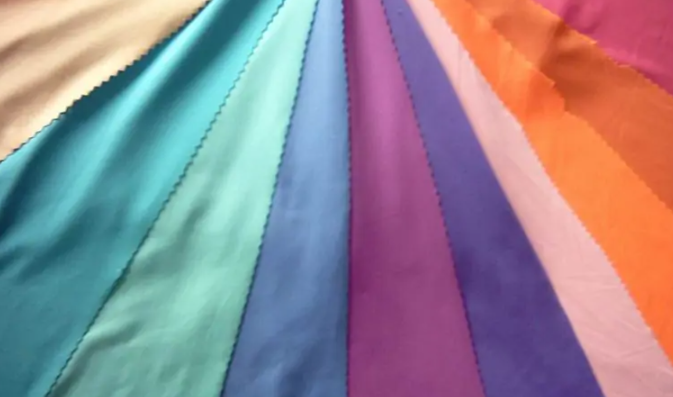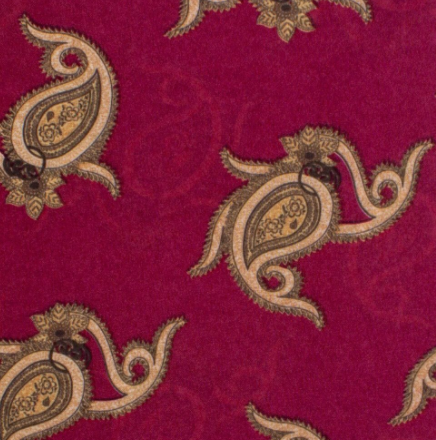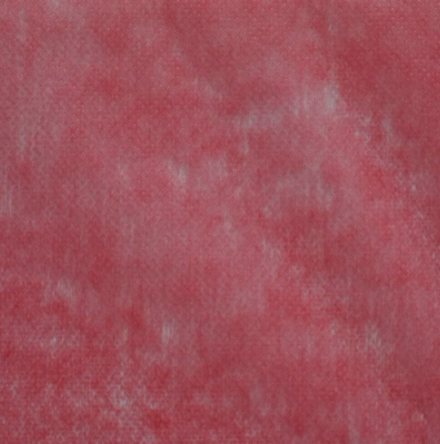Classification of clothing accessories

All these accessories have an important impact on the inner quality and external quality of clothing. For example: lining, sewing line is mainly to affect the inner quality of clothing, affecting the use of clothing firmness, of course, also play a certain decorative role. And cushion makings, lacy basically is used to decorate dress.
The quality of a suit of clothing design, accessories often play a great role, even more than the fabric itself. The collocation of excipient is appropriate, can have the effect that make the finishing point, get twice the result with half the effort, and conversely, can be gild the lily only.
When composing clothing, all materials used in clothing besides fabric are called clothing accessories. According to the role of accessories in clothing can be divided into lining, padding, stuffing, sewing thread, fastening materials, decorative materials, logo materials, packaging materials, etc.
In the clothing material

https://www.nbsoco.com/pro-2-68-798.html
1, cotton fiber lining 2, silk fabric lining 3, viscose fiber lining 4, acetate filament lining 5, synthetic fiber filament lining
Lining material is the innermost layer of clothing material, usually called lining, lining or lining, is used to cover part or all of the clothing fabric or lining material.
The main varieties of lining are cotton fabric lining, silk fabric lining, viscose fiber lining, acetate filament lining, synthetic fiber filament lining, etc.
1, cotton fiber lining
The main varieties of cotton fabric lining are muslin, city cloth, cloth, flannelette, etc., mostly used for cotton fabric casual wear, jackets, children's wear, etc. This kind of lining material is good in moisture absorption and warmth preservation, small static electricity, comfortable to wear, moderate price, but not smooth enough.
2, silk fabric lining
Silk fabrics are electric spinning, small spinning, taffeta, silk spinning, soft satin, etc., used for silk clothing, summer thin woolen clothing, high-grade woolen clothing and fur, leather clothing. This material is smooth, texture and beautiful, cool feeling is good, static electricity is small, but not firm, large shrinkage, high price.
3, viscose fiber lining
Viscose fiber lining material is mainly beautiful silk, widely used. Such as suits, suits, coats, skirts, trousers, jackets and other high-grade clothing can use beautiful silk lining. The lining material is smooth, easy to wear and take off, moderate thickness, rich color, easy to heat set, garment effect is good, but its wet strength is low, shrinkage rate is large, easy to wrinkle, not washable.
4, acetate filament lining
Acetate filament lining, there is called yasha, with its good comfort and diversification of varieties become high-grade clothing commonly used lining, its feel, luster, texture and silk texture similar, small shrinkage, thin, thick and plain, twill, satin, jacquard and other specifications, suitable for different types of texture fabrics.

https://www.nbsoco.com/pro-2-62-269.html
|
|
5, synthetic fiber filament lining
Nylon silk in synthetic fiber filament lining is commonly used in general clothing lining, light in texture, smooth, firm wear resistant, not shrinking, not fading, cheap. But the hygroscopicity is small, static electricity is larger. It is hot and stuffy, not draping enough and easy to vacuum. Can be used for jacket, windbreaker, ski clothing in the middle and low grade clothing.
The clothing lining
Lining is used for some parts of clothing, foil, perfect clothing modeling or auxiliary clothing processing materials, such as collar lining, chest lining, waist lining, etc.
There are many kinds of clothing lining materials, which can be divided into several categories according to the parts used, lining materials, lining types, and the combination of lining materials and fabrics. The main varieties are cotton lining, linen, hair bristle lining, horsetail lining, resin lining, adhesive lining and so on.
1, cotton lining common cotton lining with coarse cloth and fine cloth lining two kinds, are plain weave organization, primary color and bleached two kinds, belong to low grade interlining.
2, hemp lining hemp lining is hemp fiber as raw material of plain weave fabric, with good stiffness and elasticity, is high-grade clothing lining. Most hemp lining on the market is actually made of pure cotton coarse cloth immersed in the right amount of resin gum juice, which is the main lining for suits and coats.
3. The hair bristle lining is the hair lining, also known as the black carbon lining, mostly dark gray and variegated color. Generally yak hair, wool, human hair blended or woven plain weave fabric. Wash line stiff and full of flexibility, modelling performance is good, use as the interlining cloth of high-grade dress more, be like the barge head line of the suit of thick model fabrics, careless, bosom treasure.
Horsetail lining horsetail lining is a plain fabric woven by horsetail and wool. The surface is brown and white of horsetail, and the density is sparse. Horsetail lining elasticity is excellent, not wrinkle, crisp, hot and humid state can be pulled out of the design required shape, long as the chest lining of high-grade clothing.
5, resin lining resin lining is made of pure cotton cloth or polyester cotton cloth resin impregnation processing made of interlining, mostly after bleaching. This lining has high stiffness, good elasticity, small shrinkage, washable, stable size and not easy to deform. It is mainly used for collar lining of Zhongshan suit and shirt.
6. Adhesive lining
Also called hot melt lining, it is made by applying hot melt adhesive to the base cloth. According to the type of bottom cloth, woven fusible lining, knitted fusible lining, non-woven lining, etc.
bedding
1, chest pad 2, collar pad 3, shoulder pad
Among them, shoulder pad can be subdivided into a variety of. For example, according to the forming way, can be divided into the following three:
Thermoplastic: the shoulder pad with exquisite style, smooth surface and moderate feel can be made by mold forming and fusion adhesive bonding technology, which is widely used in all kinds of clothing. For the fashion of thin fabric, the senior thermoplastic shoulder pad is an indispensable tool.
Suture type: the use of sewing machine and high head car and other equipment can be different raw materials together into different styles of shoulder pads, its product shape and surface finish is poor, mostly used in thick fabric clothing.
Cutting type: use cutting equipment to cut specific raw materials (sponge), can be made into shoulder pads. However, due to the inherent defects of sponge shoulder pad (easy deformation, easy to change color, etc.), this type of shoulder pad has been eliminated.
Clothing packing
1, flocculant packing 2, material packing
Garment sewing thread
Polyester sewing thread is also called high strength thread, nylon sewing thread is called nylon thread, we usually call it (pearlescent thread) polyester sewing thread is made of polyester long or short fiber, wear-resistant, low shrinkage rate and good chemical stability. Because of its advantages of high strength, good wear resistance, low shrinkage, good moisture absorption and heat resistance, corrosion resistance, resistance to mildew and moth eating, polyester thread is widely used in the clothing sewing of cotton, chemical fiber and blended fabric. In addition, it also has a complete color, color fastness, do not fade, do not change color, sun and other characteristics
Garment fasteners
1. Buttons 2. Zippers 3. Other fastening materials
other
1, belt materials 2, decoration materials 3, marking materials 4, packaging materials
Process classification
The knowledge of garment accessories can be divided into two categories: plane label and satin label.
Plain cloth label: cloth label is as simple as fabric structure, once a weft up and down interwoven called simple plain label. Generally speaking, warp yarns are fixed, or black, or white, so there are black and white flat, light color background standard, generally use white flat, dark generally use black flat. The pattern and color of the cloth are mainly expressed by weft, and the color expressed will be different from the effect of warp crossing. Because general machines have limitations on the types of weft, the colors they can express are limited, generally less than 8 kinds. It can be seen from the above that the price components are: the width of the fabric, that is, the amount of warp yarn used; Length of cloth label, and length of each color along the warp direction. In order to express more detail and color, all the weft is doubled, called double-sided, and if a color needs to be more three-dimensional, another weight of yarn is added, called heavy shuttle. In addition to washing and size, most of the use of planar double-sided labels. The cloth label is yarn to express the pattern, and there must be a difference with the original plane design, so it is impossible to do large goods without a small sample.
Satin fabric: fabric is made of warp and weft interweaving, in addition to the quality can be improved by doubling the weft, there is also by doubling the warp, this process is satin structure. By doubling the warp, the fabric becomes soft and smooth. Because the warp yarn is too dense after doubling, the weft cannot express the pattern well, and the underside color cannot be made very flexible. Only through the following process to show certain color requirements. A machine set to do flat or satin, is generally relatively fixed. The width of trimmed satin shall not exceed 10.8cm and of selvage shall not exceed 5.0cm.